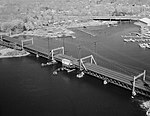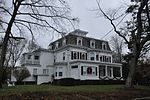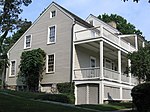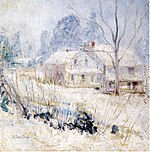Riverside Avenue Bridge (Greenwich, Connecticut)
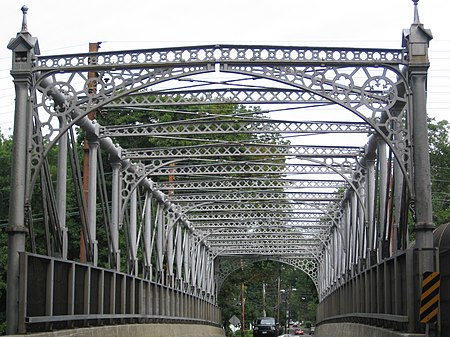
The Riverside Avenue Bridge is the only cast-iron bridge in Connecticut and one of a small number still in use in the United States. It carries Riverside Avenue over the New Haven Line railroad tracks in the Riverside section of Greenwich, Connecticut. The bridge was part of an earlier span built in 1871 over the Housatonic River by the New York and New Haven Railroad, and when that bridge was replaced, part of it was erected in Riverside in 1895. It was placed on the National Register of Historic Places in 1977.Called "an important engineering landmark" by Cultural Resource Management, a periodical published by the National Park Service, the bridge carries one of the primary streets in this section of town, and is owned by the Connecticut state government.
Excerpt from the Wikipedia article Riverside Avenue Bridge (Greenwich, Connecticut) (License: CC BY-SA 3.0, Authors, Images).Riverside Avenue Bridge (Greenwich, Connecticut)
Riverside Avenue,
Geographical coordinates (GPS) Address Nearby Places Show on map
Geographical coordinates (GPS)
| Latitude | Longitude |
|---|---|
| N 41.031537 ° | E -73.588169 ° |
Address
Riverside
Riverside Avenue
06878
Connecticut, United States
Open on Google Maps

